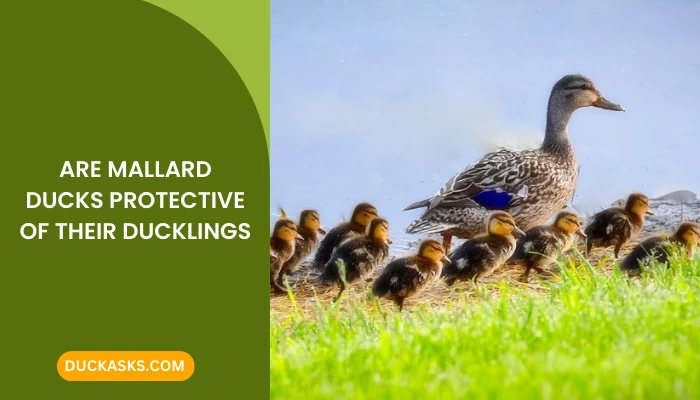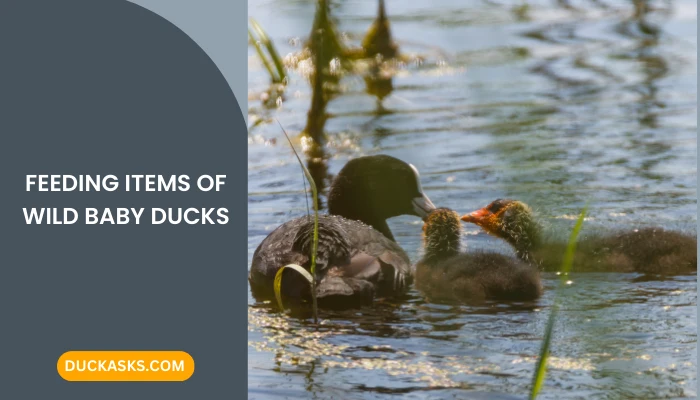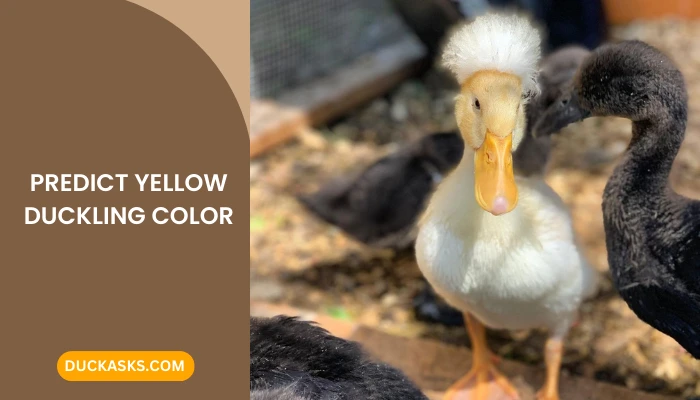Are Mallard Ducks Protective Of Their Ducklings?
Mallard ducks (Anas Palthyrhynchos) are eminent for their distinct vibrant plumage and quacks usually breed all around the subtropical area of North Africa, the Americas, and Eurasia.
If you ever wonder whether mallard ducks are protective of their ducklings or not, you have come to the right place. Mallard ducks are generally protective of their ducklings. However, the extent of this protective instinct varies among individuals under manifold circumstances. The maternal endeavor provided by these waterfowls plays a significant impact on the survival of their young.
In this article, we will explore the complexities of their protective behaviors and unravel the world of Mallard duck parenting. So, stay with us as we are about to start.

Looking for more articles about ducklings:
How Do Mallard Ducks Protect Their Ducklings?
In a world full of potential danger, Mallard ducks own some intricate but fascinating ways to conserve their adorable offspring.
This safeguarding behavior plays a vital role in the early stages of the duckling’s life. Here’s how Mallard ducks defend their blood from potential threats –

1. Ear to the Ground
Mallard ducks are extremely watchful when it comes to protecting their babies. Through constant vigilance, they are always on the lookout. Any suspicious movement or sneaky predators, these parents are on it.
2. Herding Experts
The ability to gather and guide mother Mallard ducks is really noteworthy. Using gentle quacks and soft calls, the mother duck encourages its duckling to stay close.
It’s like they have their own mini-parade. By doing these gestures, she ensures none of her fluffballs wander off.
3. Providing Shelter and Warmth
Whether it’s naptime or a bit cold outside, Mama Mallard knows how to keep her babies comfy. She sets herself in a certain posture that not only creates a barrier to threats but also keeps her ducklings warm and cozy.
4. Teaching Survival Skills
As they grow, their mother becomes their educator. She teaches her babies essential survival skills like finding yummy insects, munching on aquatic plants, and so on.
5. Alerting and Escaping
If the mother Mallard duck senses anything fishy, she doesn’t miss a beat. With a series of loud and raucous quacks, she alerts her ducklings by telling, “Hey, watch out folks!” Then, leading them to the water, she ensures their escape route.
6. Defensive Behavior
Mama Mallard doesn’t hesitate to step up whenever she senses any real threat. She fluffs up her feathers, flaps her wings, and even charges toward the predators to divert their attention from her ducklings.
7. Learning by Copying
These little ducklings are like sponges. They will soak up everything their mother does. As a result, they learn how to navigate different situations and respond to different cues.
Are Mallard Ducks More Protective of Their Ducklings During Certain Times of the Year?
Mallard ducks have a super protective instinct, which turns up a notch at certain times of the year. But when is the exact time?

Well, they have like a built-in calendar. They know when to go all-out superhero mode for their ducklings. Let us break it down for you.
Breeding Season
When it’s the beginning of spring in the Northern Hemisphere, which is usually the month of October and November, Mallard ducks make couples.
The whole spring season is considered their breeding time. During this time, these birdies remain the most protective.
As it takes about 28 days to hatch all the eggs, the mama Mallards hardly leave the nest. They are always safeguarding their nest and eggs from any possible harm and making sure nothing messes with their ducklings.
Duckling Days
When the eggs hatch, the ducklings need around 10 hours to dry themselves and get used to their tiny legs. At this moment, the protective instinct of Mallard shifts to another gear.
They become the ultimate bodyguards, keeping their vigilance eye on the fluffy offspring and being ready to jump over anything that threatens their babies.
Growing Up and Spreading Wings
As these fluffy cuties start to grow and become a little bit independent, the protective nature of the Mallard doesn’t vanish at all. Instead, it just takes a back seat.
Parent Mallard lets their kid wander here and there, but they are still there to lend a helping hand if a thing goes south.
How Long Do Mallard Ducks Stay with Their Ducklings Before They Become Independent?
The early stage of Mallard ducklings is very vulnerable. At this stage, They can’t survive without their parents.
But, after 50 to 60 days, Mallard ducklings start showing signs of becoming fetterless. With a few feathers to ruffle, they are ready to live on their own.

However, the time of fledging and becoming independent may be postponed depending on different factors like bad weather, feeding efficiency, health, environment, family dynamics, etc.
Nature’s got its own timeline and so, if everything goes right, these feathered birds will be ready to step into the world as free explorers.
Frequently Asked Questions
1. Do male Mallard ducks take care of ducklings?
After forming pairs from October to November, male Mallard ducks leave the female when she lays eggs. Later on, he joins with other males and waits for the molting period. Only the female Mallard takes care of the eggs and ducklings.
2. How many times do mother Mallard ducks leave their nest during incubation?
Especially in the morning or afternoon, Mama Mallard leaves her nest for an hour once or twice a day so that she can eat.
Final Words
So, do Mallard ducks protect their ducklings? You bet they do. These amazing birdies exhibit a whole lot of maternal care and love for their offspring.
From keeping a vigilant eye to providing cozy comfort, Mallard ducks are like the ultimate guardians.
Though each duck has its own style of caring, the message is clear: These feathered families stick together and ensure their little one remains safe and sound until they are big enough to be self-reliant.
If you liked this post, follow us on our social media platforms on Twitter, Facebook, and Pinterest, for further informational blog posts and much more.






